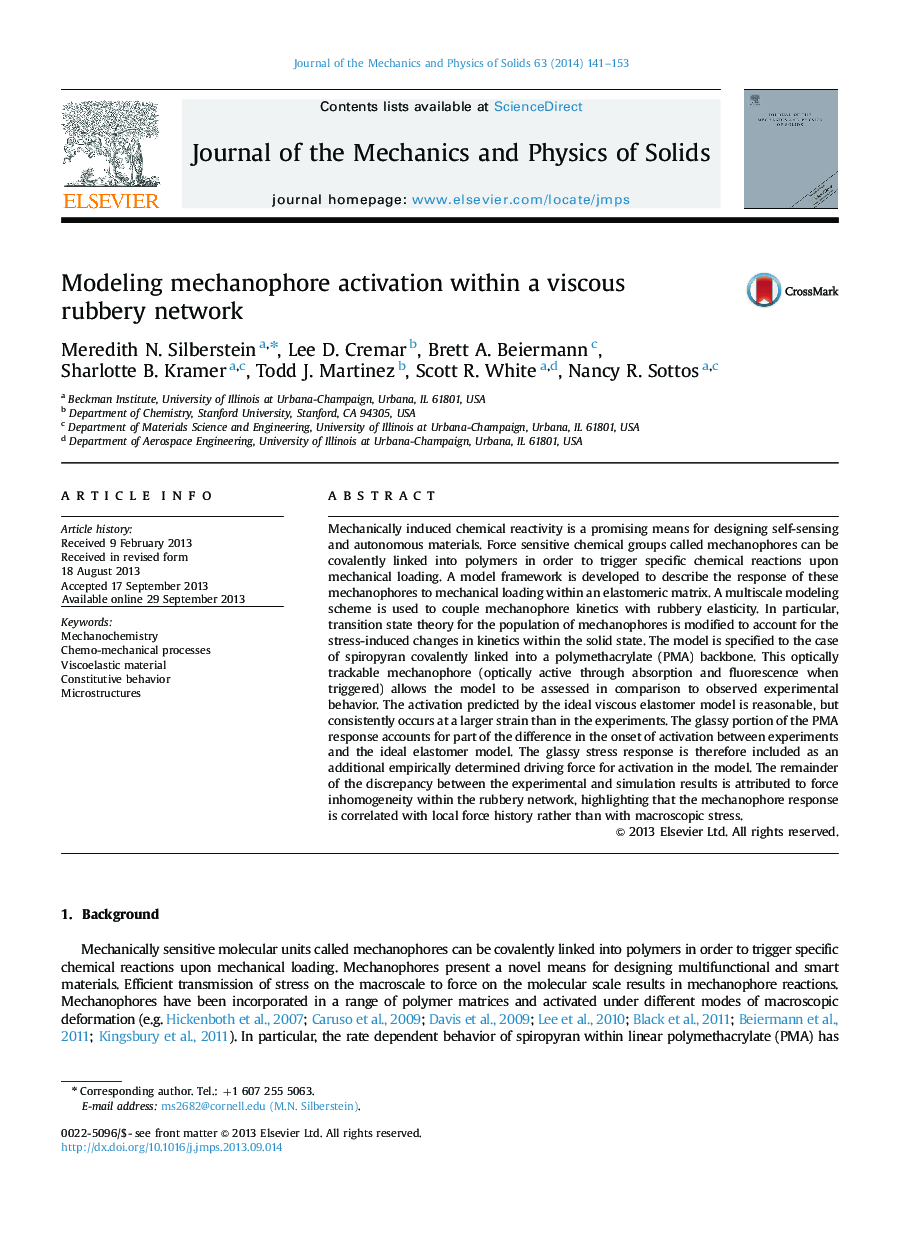| کد مقاله | کد نشریه | سال انتشار | مقاله انگلیسی | نسخه تمام متن |
|---|---|---|---|---|
| 793137 | 1467080 | 2014 | 13 صفحه PDF | دانلود رایگان |
• Framework developed for modeling mechanochemical reactions in an elastomer.
• Multiscale model specified to the response of spiropyran-linked polymethacrylate.
• Model predicts strain and strain rate dependent mechanochemical response.
• Mechanophore response found to be sensitive to local inhomogeneity.
Mechanically induced chemical reactivity is a promising means for designing self-sensing and autonomous materials. Force sensitive chemical groups called mechanophores can be covalently linked into polymers in order to trigger specific chemical reactions upon mechanical loading. A model framework is developed to describe the response of these mechanophores to mechanical loading within an elastomeric matrix. A multiscale modeling scheme is used to couple mechanophore kinetics with rubbery elasticity. In particular, transition state theory for the population of mechanophores is modified to account for the stress-induced changes in kinetics within the solid state. The model is specified to the case of spiropyran covalently linked into a polymethacrylate (PMA) backbone. This optically trackable mechanophore (optically active through absorption and fluorescence when triggered) allows the model to be assessed in comparison to observed experimental behavior. The activation predicted by the ideal viscous elastomer model is reasonable, but consistently occurs at a larger strain than in the experiments. The glassy portion of the PMA response accounts for part of the difference in the onset of activation between experiments and the ideal elastomer model. The glassy stress response is therefore included as an additional empirically determined driving force for activation in the model. The remainder of the discrepancy between the experimental and simulation results is attributed to force inhomogeneity within the rubbery network, highlighting that the mechanophore response is correlated with local force history rather than with macroscopic stress.
Figure optionsDownload as PowerPoint slide
Journal: Journal of the Mechanics and Physics of Solids - Volume 63, February 2014, Pages 141–153
